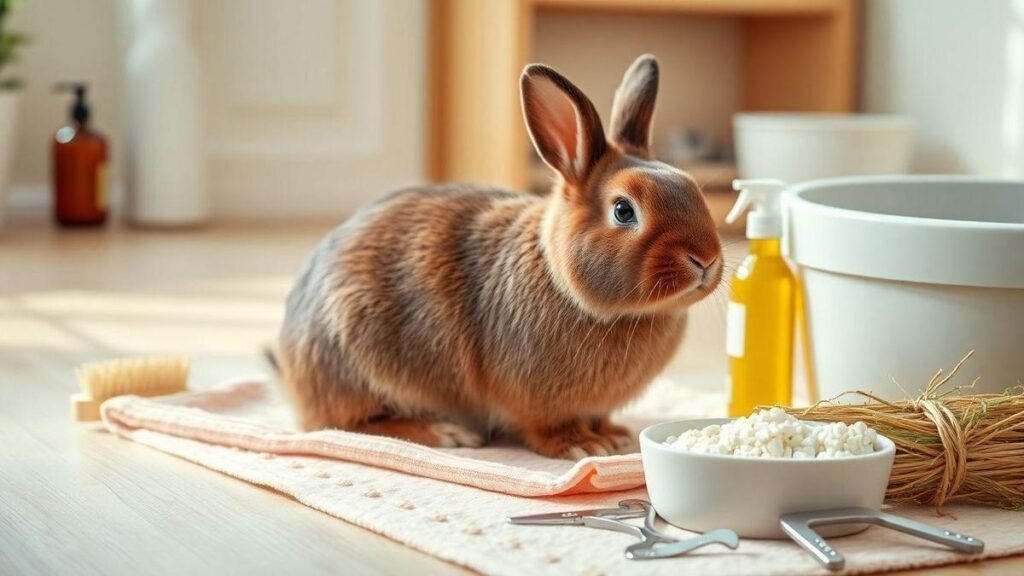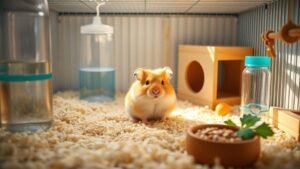Dicas de higiene para coelhos em casa e cuidados diários
I share how I keep my rabbit clean and healthy. I groom daily to prevent mats and hair ingestion that can lead to GI stasis. My kit: a slicker brush, a fine-tooth comb, a grooming glove, and a few Easy Rabbit Care products for spot cleaning. Below I walk through quick brushing steps, a spot-clean routine to cut odor and bacteria, weekly cage sterilization, safe cleaners and rinsing, when a bath is truly needed, how I calm and dry my rabbit, and simple plans for nail, ear, teeth, and parasite care. These are practical Dicas de higiene para coelhos em casa e cuidados diários I follow.
Key takeaway
- I clean the litter daily.
- I brush my rabbit to keep their fur clean and reduce hair ingestion.
- I check and wipe ears and eyes.
- I trim nails safely and keep vet visits up to date.
- I wash my hands before and after handling my rabbit.
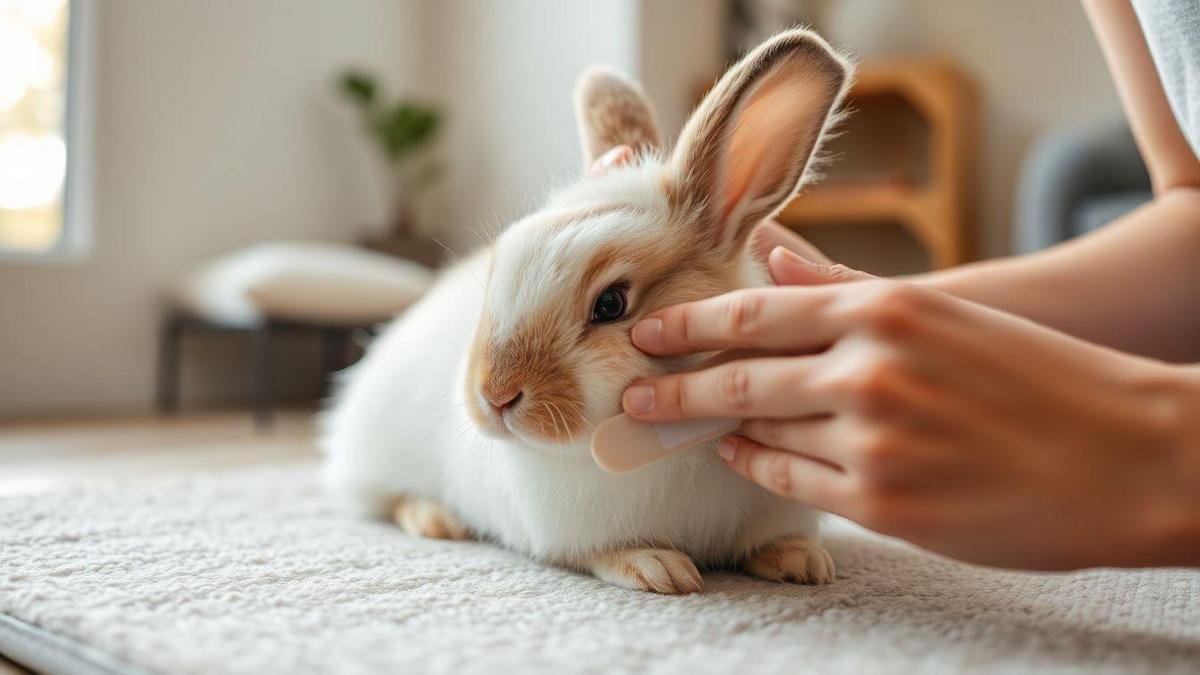
How I keep my rabbit’s fur clean and healthy with daily grooming
Why I brush daily to prevent mats and hair ingestion
I brush my rabbit daily because loose fur builds up fast. Rabbits groom themselves and swallow fur, which can cause GI stasis or blockages. Mats trap dirt and moisture and can hide sores. Daily brushing reduces the fur my rabbit swallows and keeps their skin healthy and coat shiny. These are core Dicas de higiene para coelhos em casa e cuidados diários that give me peace of mind — they fit into a simple home routine like the one described in my notes on daily habits that help keep your pet happy and relaxed indoors.
Tools I use
I keep a small kit with gentle, effective tools:
| Tool | What I use it for | When I use it |
|---|---|---|
| Slicker brush | Removes loose fur and light debris | Daily, short strokes |
| Fine-tooth comb | Pulls out small tangles and checks skin | After brushing, if I feel tugging |
| Grooming glove | Quick petting while catching fur | When my rabbit is nervous |
| Easy Rabbit Care shampoo | Spot-cleaning dirty patches | Only when vet or I really need it |
| Drying towel | Gently dries damp fur after spot wash | Immediately after shampooing |
I favor soft tools and avoid metal teeth that pull. I keep everything clean in one small box and store supplies thoughtfully using ideas from how to organize your pets toys and accessories.
Quick daily brushing steps to reduce fur ingestion
- Sit in a quiet spot and let the rabbit relax—calm rabbits cooperate.
- Start with a slicker brush using gentle, short strokes in the direction of the fur.
- Use the grooming glove to calm them while brushing sides and back.
- Check under the chin and behind ears with the fine-tooth comb for hidden mats.
- Loosen small mats with fingers first, then comb gently from ends toward the skin.
- Remove loose fur from the brush into a trash bin or lint roller—don’t leave clumps.
- Give a small treat and praise; positive moments make grooming easier next time.
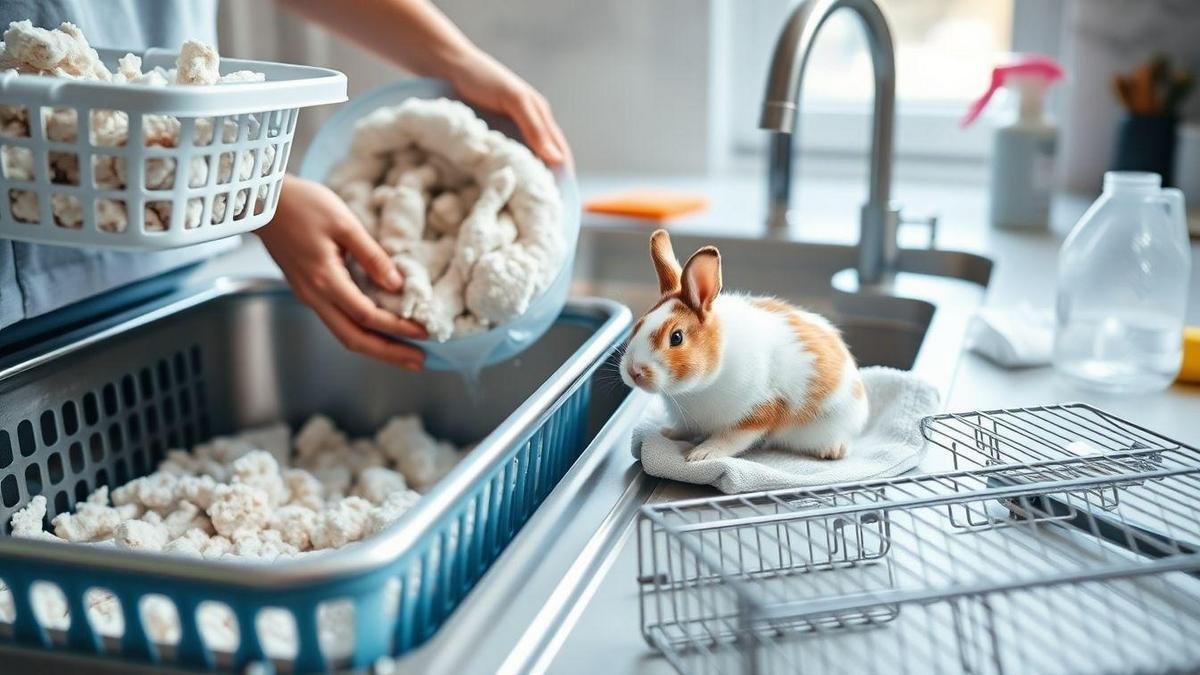
How I clean my rabbit’s cage and sterilize bedding every week
I keep the routine simple and regular so the cage stays safe, clean, and comfortable. Following consistent Dicas de higiene para coelhos em casa e cuidados diários prevents problems. For broader tips on keeping the whole home comfortable for pets, I follow principles from how to keep your pet’s environment clean and comfortable.
Daily spot-clean routine to cut odor and bacteria
- Morning: remove wet bedding and soiled hay; toss droppings into a sealed bag.
- Evening: wipe litter area and food bowl rim with a damp cloth.
- Every day: top up fresh hay and water; air the cage 10–15 minutes when possible.
Small actions take little time but significantly reduce odor and bacteria. For keeping food and water areas sanitary, I use techniques from how to keep your pet’s food and water area clean and safe.
Safe cleaning products and rinsing to avoid residue
Use gentle, pet-safe items and rinse thoroughly.
| Product | Use | Dilution / Note | Rinse time |
|---|---|---|---|
| White vinegar (5%) | Remove urine smell | 1 part vinegar 3 parts water | Rinse 1–2x with clean water |
| Mild dish soap | Degrease dishes, hard surfaces | Small squirt in warm water | Rinse until no bubbles remain |
| Enzyme cleaner (pet-safe) | Break organic stains | Follow label | Rinse if label says to |
| Hot water | General rinse and soak | As hot as safe for materials | Multiple rinses if needed |
I rinse until no slippery soap feel or chemical smell remains. Machine-wash bedding with an extra rinse; avoid bleach or harsh disinfectants on areas the rabbit touches. Keep pets safe during cleaning by following simple precautions in how to keep pets safe during cleaning and chores.
Step-by-step cage sterilization routine
- Move the rabbit to a safe playpen or carrier with water and hay.
- Remove toys, bowls, and bedding; shake loose hay outdoors.
- Sweep loose debris and droppings.
- Wipe surfaces with vinegar solution; let sit 5–10 minutes.
- Scrub corners and crevices with a soft brush.
- Rinse thoroughly with clean water.
- Dry with towels and air for at least 30 minutes—return only fully dry items.
- Wash bedding in hot water if safe; run extra rinse.
- Replace clean bedding, bowls, and toys; return the rabbit and observe comfort.
The whole routine takes about 30–45 minutes—short enough to keep stress low and consistent with creating a pet-friendly indoor space described in how to create a pet-friendly indoor space.

How I give a safe bath only when needed and calm my rabbit
Signs that a bath is truly required
Baths stress rabbits, so I act only for clear signs:
| Sign | Why it matters | What I do |
|---|---|---|
| Fecal matting | Can cause pain and infection | Carefully trim or clean; vet help if large |
| Soaked or smelly fur | Urine/feces can irritate skin | Spot-clean with wipes or warm cloth; full bath only if area is large |
| Greasy, dirty coat | Can attract flies or cause flystrike | Clean spot immediately; call vet if smell stays |
| Visible parasites | Stress and disease risk | Contact vet before treatments |
| Lethargy or wounds near dirty fur | Could indicate infection | Seek vet care right away |
I do not bathe for crumbs or normal dirt—rabbits groom themselves. Only health risks justify a bath. For advice on helping pets feel calm during handling, I review tips from how to help pets feel safe and confident indoors.
How I use no-rinse wipes and warm water safely
| Tool | When I use it | Steps | Warnings |
|---|---|---|---|
| No-rinse rabbit-safe wipes | Spot cleaning (rear, paws, face) | Hold rabbit gently; use one wipe per area | Choose rabbit-safe wipes; stop if skin reacts |
| Warm water cloth | Sticky urine or soft mats | Soak cloth, wring well, press and clean gently | Never soak the rabbit or pour water over it |
| Vet-recommended shampoo | Only when vet asks for full wash | Follow vet directions exactly | Full baths are rare and stressful |
I speak softly and keep movements slow. Use short cleaning sessions; if the rabbit panics, stop and try later.
Quick dry and warm care after wet cleaning
| Step | Time | Tip |
|---|---|---|
| Towel pat dry | 1–3 minutes | Pat—do not rub |
| Wrap in warm towel | 5–10 minutes | Hold rabbit close to calm |
| Quiet warm room | 15–30 minutes | Keep lights low and voice soft |
| Check fur | After 30 minutes | Ensure fur is dry and fluffed; resume grooming if the rabbit wants |
Avoid hot air near the skin. If using a hair dryer, keep it on low and at a distance. Stop if the rabbit shivers or hides.
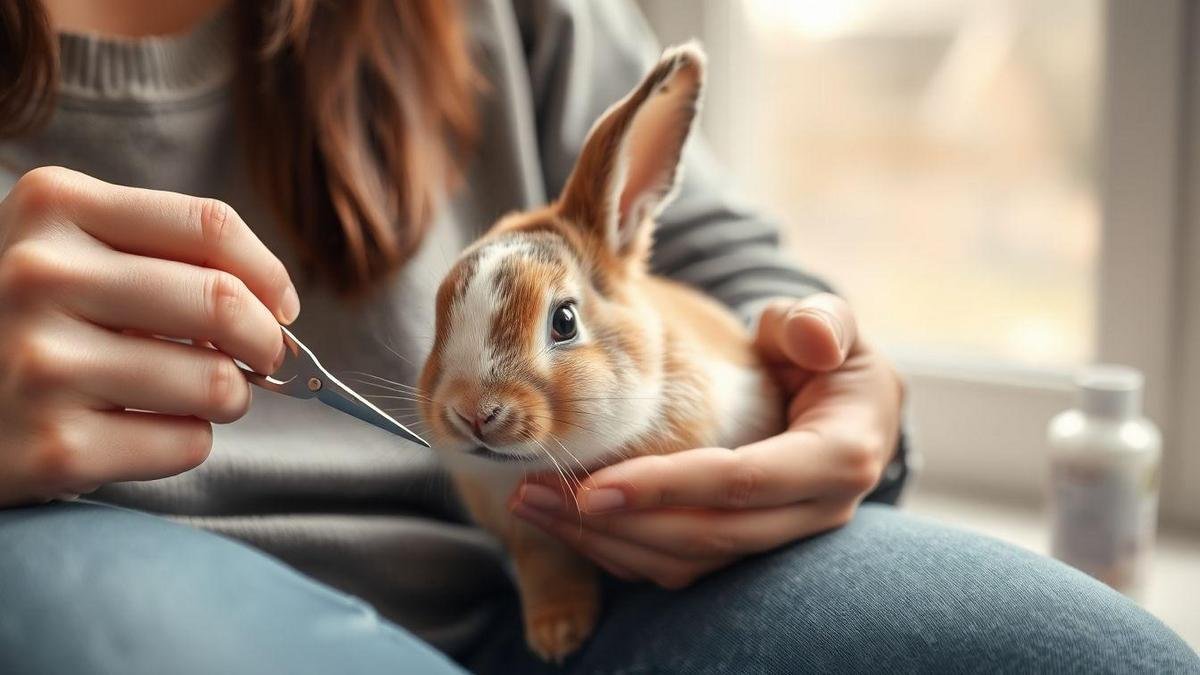
How I trim my rabbit’s nails and check ears to avoid pain
I work slowly, speak softly, and stop at the first sign of stress or bleeding. I use Dicas de higiene para coelhos em casa e cuidados diários as my daily guide and check nails and ears every few weeks.
Tools and tips to avoid cutting the quick
| Tool | Why I use it | Tip |
|---|---|---|
| Small animal nail clippers | Clean cut, less crushing | Cut small bits |
| Styptic powder | Stops bleeding fast | Keep within reach |
| Towel or wrap | Keeps rabbit calm and still | Gentle wrap |
| Flashlight | Helps see the quick in light nails | Use natural light if possible |
| Helper | One holds, one trims | Two hands are steadier |
- Check for the quick before cutting. In white nails you can see a pink line; cut small pieces.
- For dark nails, trim tiny bits at a time and stop at a gray dot.
- Hold the paw firmly but gently; do not pull toes. Cut at a slight angle, away from the pad.
- Stay calm—your mood sets the rabbit’s mood.
For building this into a steady schedule, I follow a simple plan like how to build a daily routine for your indoor pet.
How I clean ears and spot infections early
I inspect ears weekly with soft light and fingers. Watch for bad smell, dark wax, red skin, head tilt, constant scratching, or pus—call the vet if any appear.
Steps:
- Use a vet-approved ear cleaner—never alcohol or hydrogen peroxide.
- Apply a small amount to a cotton ball; never insert anything into the ear canal.
- Wipe the visible ear gently; do not push deep.
- If the rabbit pulls away or seems sore, stop and call the vet.
- Keep a log with dates and photos to spot patterns.
Nail trimming and ear check checklist
| Item | When | What I look for |
|---|---|---|
| Nail check & trim | Every 4–6 weeks | Quick, cracks, uneven wear |
| Ear check | Weekly | Wax, odor, redness, discharge |
| Calm set-up | Every session | Soft voice, towel, helper if needed |
| Emergency kit | Always ready | Styptic powder, vet number, clean towel |
| Record | After each check | Notes or photo if odd signs |
Keep the checklist near the rabbit’s area and mark dates—small notes prevent big trouble.
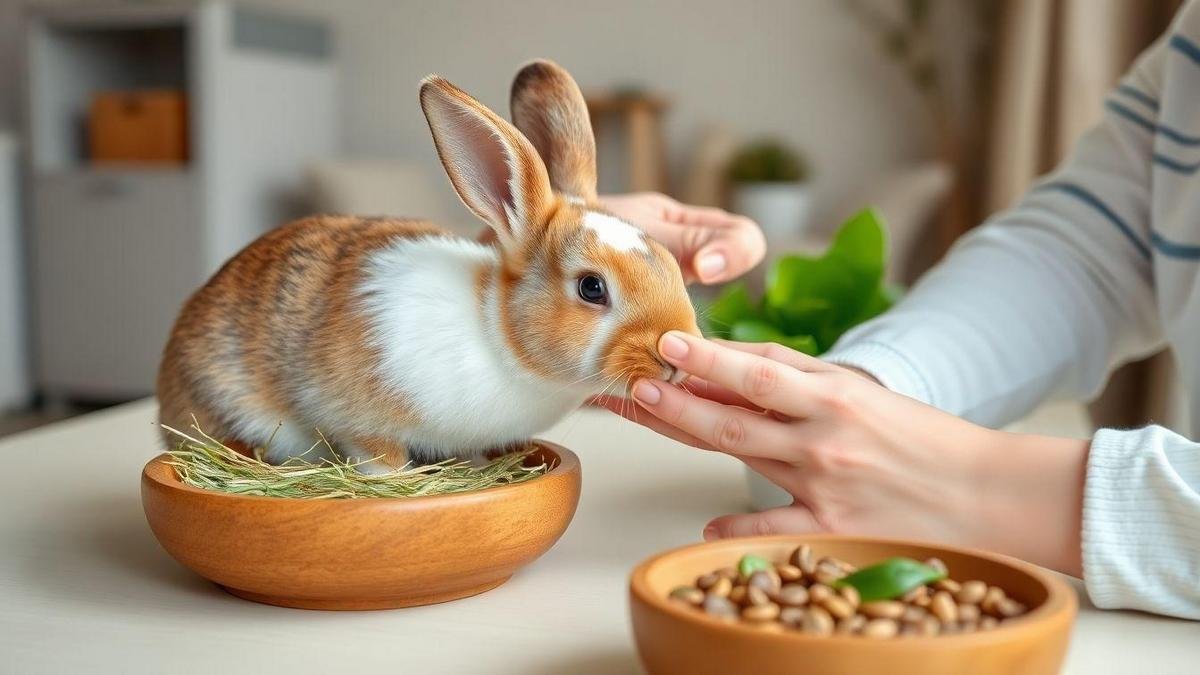
How I protect my rabbit’s teeth with hay, checks, and diet
Why long hay and fibrous food wear down teeth naturally
Rabbit teeth grow continuously. Long hay and fibrous food act like a natural file: chewing long strands makes incisors and molars wear evenly.
| Hay type | Best for | Effect on teeth |
|---|---|---|
| Timothy | Adult rabbits | Good wear from long, coarse strands |
| Orchard | Mild flavor | Moderate chew, good variety |
| Meadow | Foragers | Mixed fibers, encourages chewing |
| Alfalfa | Young rabbits/nursing | Rich—less ideal long-term for adults |
I always pick hay with long fibers and coarseness, add fibrous veggies, and small pellet amounts for variety. This is a core part of my Dicas de higiene para coelhos em casa e cuidados diários.
How I check teeth at home and when I call the vet
I watch eating, droppings, and behavior daily; never force the mouth open. Call the vet for:
- Poor appetite or dropping food
- Drooling or wet chin fur
- Runny eyes or nasal discharge
- Smaller, misshapen droppings
- Weight loss or lethargy
- Visible overgrown incisors or mouth pain
| Sign I see | What I do |
|---|---|
| Mild change in eating | Increase hay, observe 24 hours |
| Drooling or weight loss | Contact vet same day |
| Visible mouth problem | Emergency vet visit |
I never try to trim teeth myself—trust the vet for trimming or repair.
Daily dental check steps
- Watch my rabbit eat for 1–2 minutes.
- Look at droppings: round and firm.
- Feel cheeks and jaw gently for lumps.
- Check for wet fur around mouth and chin.
- Scan front teeth for even length and wear.
- Increase hay if chewing seems low.
- Call the vet if anything looks wrong.
I keep a small notebook with dates and notes for the vet.
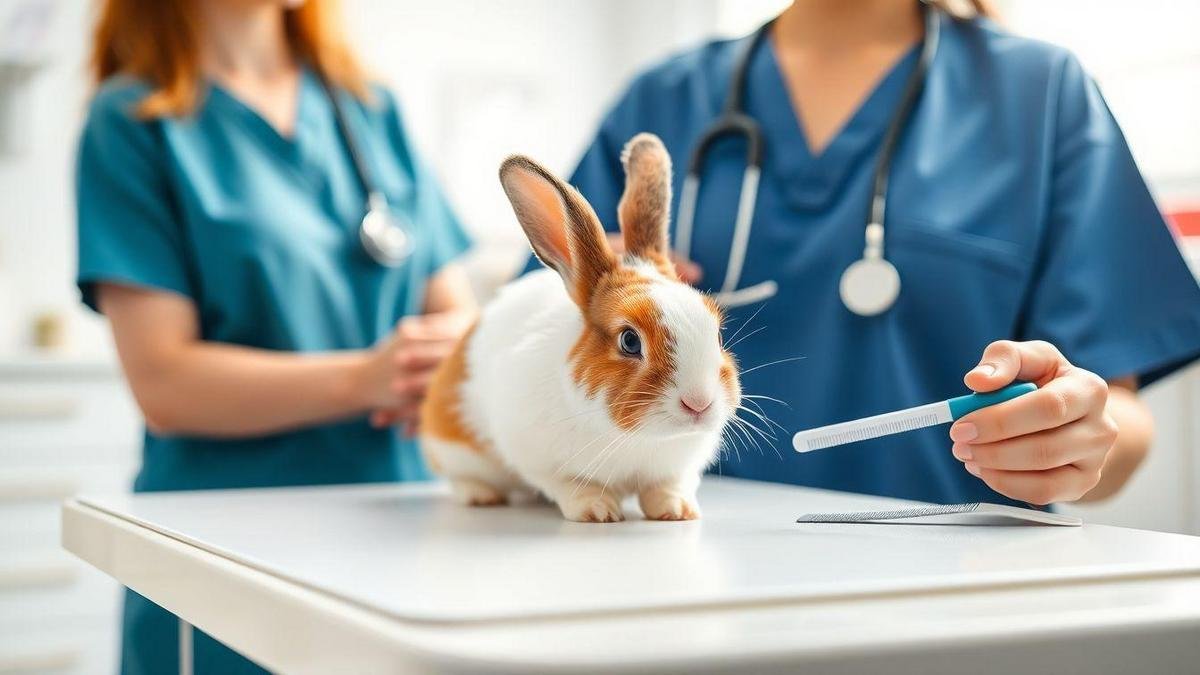
How I prevent parasites and keep a vet schedule
Flea, mite, and worm prevention measures and records
I check weekly: part the fur to look for flea dirt, moving dots, or flaky skin from mites. I only use vet-approved treatments—some dog/cat products are dangerous for rabbits. Keep a clear record of each treatment.
| Date | Parasite type | Product used | Next due | Notes |
|---|---|---|---|---|
| 2024-03-10 | Fleas | Vet-approved topical | 2024-04-10 | No reactions |
| 2024-06-05 | Worms | Dewormer by vet | 2024-12-05 | Fecal test clear |
| 2024-09-12 | Mites | Vet ointment | As directed | Improved in 2 weeks |
Weigh the rabbit monthly—sudden weight loss can signal parasites. Save fecal test results for trend spotting. For overall scheduling and what to expect at home, I refer to the importance of routine vet visits.
Vet visit plan for shots, checks, and hygiene advice
I visit the vet at least once a year for a full check: vaccines, teeth, ears, nails, and parasite planning. I ask for written home-care advice and use Dicas de higiene para coelhos em casa e cuidados diários as my checklist.
Daily home tasks:
- Brush fur to spot mites and remove loose hair.
- Clean the litter box to reduce parasite risk.
- Check eyes, ears, and bottom for discharge or dirty fur.
- Trim nails or ask the vet tech to demonstrate.
| Visit type | Frequency | What we cover |
|---|---|---|
| Wellness check | 1× year | Teeth, weight, coat, ears, general health |
| Vaccination review | As advised | Which vaccines and when |
| Parasite review | Every visit | Fecal test, skin check, product updates |
| Emergency visit | As needed | Sudden illness, severe itching, diarrhea |
Set reminders for treatments and appointments; keep treatment records on phone and in a notebook. The plan should be simple and steady.
Daily checklist (quick)
These are short, actionable Dicas de higiene para coelhos em casa e cuidados diários you can follow each day:
- Brush for 5–10 minutes (slicker brush comb).
- Scoop litter and remove wet spots.
- Check food, water, and hay supply.
- Inspect eyes, ears, bottom, and feet.
- Note anything odd in your log.
Make these habits part of a consistent schedule by following a plain routine like how to build a daily routine for your indoor pet or the tips in how to maintain a clean home with pets without stress.
Conclusion
Routine beats crisis. Short, steady actions—daily grooming, quick spot‑cleans, weekly cage sterilization, and gentle checks of ears, eyes, nails, and teeth—keep my rabbit healthy and calm. Use a slicker brush and comb, rinse away residues, rely on vet‑approved products, offer lots of long hay, and only bathe when truly necessary. Log treatments and vet visits; a few notes save worry later. These practical Dicas de higiene para coelhos em casa e cuidados diários are my safety net. For general care pointers and more routines, see the full guide to caring for pets.
Frequently asked questions
How often should I clean my rabbit’s cage?
Scoop droppings and wet spots daily. Do a deep clean and sterilize bedding weekly. For tips on preventing litter issues, review how to prevent litter box avoidance with simple tweaks.
How do I groom my rabbit safely?
Brush gently in short sessions using a soft slicker brush and comb. Check for mats and skin issues. Build these sessions into a daily plan similar to daily habits that help keep your pet happy and relaxed indoors.
What’s the best way to keep the litter box fresh?
Spot-clean daily, change the litter twice a week, and add a bit of hay to encourage use. Keep food and water bowls clean using guidance from how to keep your pet’s food and water area clean and safe.
How can I spot hygiene problems early?
Watch for bad smell, matted fur, loose stools, or changes in eating. Check eyes and ears daily and call the vet if you worry.
Where can I find simple tips and routines?
Use these practical Dicas de higiene para coelhos em casa e cuidados diários—short, steady tasks every day prevent most problems. For a bigger picture on preparing your home and keeping routines gentle, see how to create a safe and stimulating space for indoor pets and the main care guide.
If you follow these clear, repeatable steps and keep a short log, rabbit hygiene becomes manageable and stress-free—both for you and your rabbit.

